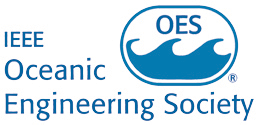

Comments: pdf
Ref.: OCEANS Great Lakes 2025, Chicago, USA, September 2025
Abstract:
Reliable underwater acoustic measurements depend heavily on the precise calibration of transducer systems.
This work introduces a novel calibration strategy tailored for spiral acoustic sources composed of multiple
vibrating segments. Spiral sources are used to estimate the bearing angle by computing the phase difference
between the produced spiral field and a reference/circular field. Departing from conventional methods that
apply amplitude adjustment during emission and phase correction during reception, the proposed technique
performs phase calibration at the transmission stage. This enables the spiral source to function as a
localization beacon for arbitrary underwater devices, independent of any prior phase configuration knowledge.
A finite element method (FEM) model was developed to characterize the behavior of individual spiral source
quadrants and to support the development of the system’s data model. The calibration method assumes that
the spiral source behaves as a linear system, generating a circular acoustic field with constant phase
distribution along its azimuth. The method involves determining optimal amplitude and phase excitation
values for each quadrant to produce the desired spiral field phase. Experimental validation in a controlled
underwater setup showed a notable decrease in maximum phase error from 12.6 degrees to 3.3 degrees.
Furthermore, FEM and experimental results indicated that the channel impulse response (CIR) estimates
were altered by the transmitting voltage responses (TVRs) in both circular and spiral modes. The proposed
TVR correction method was experimentally validated and demonstrated to be effective, indicating its potential
for future integration into calibration procedures.
“©1992-2024 IEEE. Personal use of this material is permitted. However, permission to reprint/republish this material for advertising or promotional purposes or for creating new collective works for resale or redistribution to servers or lists, or to reuse any copyrighted component of this work in other works must be obtained from the IEEE.”